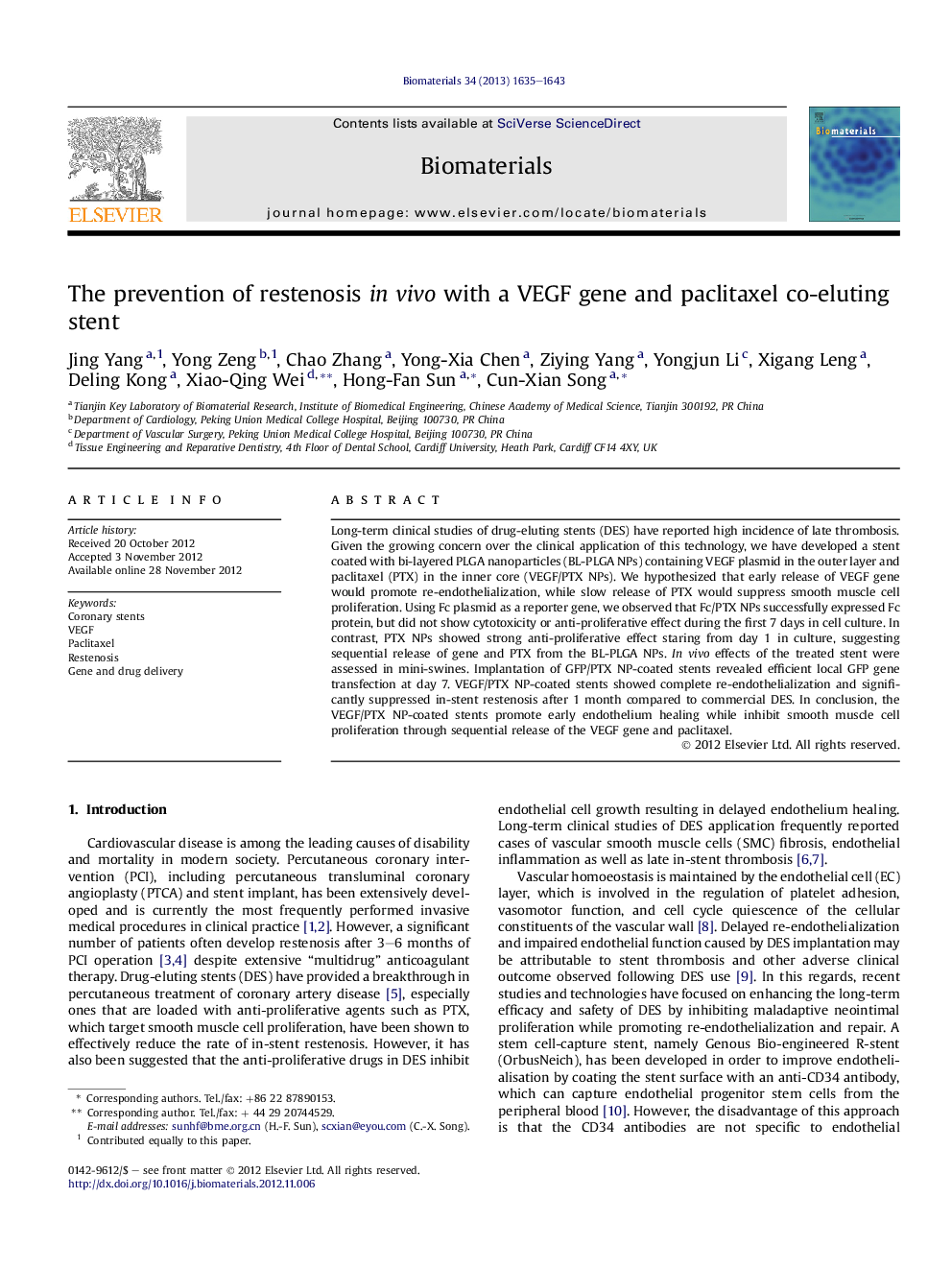| Article ID | Journal | Published Year | Pages | File Type |
|---|---|---|---|---|
| 10229130 | Biomaterials | 2013 | 9 Pages |
Abstract
Long-term clinical studies of drug-eluting stents (DES) have reported high incidence of late thrombosis. Given the growing concern over the clinical application of this technology, we have developed a stent coated with bi-layered PLGA nanoparticles (BL-PLGA NPs) containing VEGF plasmid in the outer layer and paclitaxel (PTX) in the inner core (VEGF/PTX NPs). We hypothesized that early release of VEGF gene would promote re-endothelialization, while slow release of PTX would suppress smooth muscle cell proliferation. Using Fc plasmid as a reporter gene, we observed that Fc/PTX NPs successfully expressed Fc protein, but did not show cytotoxicity or anti-proliferative effect during the first 7 days in cell culture. In contrast, PTX NPs showed strong anti-proliferative effect staring from day 1 in culture, suggesting sequential release of gene and PTX from the BL-PLGA NPs. In vivo effects of the treated stent were assessed in mini-swines. Implantation of GFP/PTX NP-coated stents revealed efficient local GFP gene transfection at day 7. VEGF/PTX NP-coated stents showed complete re-endothelialization and significantly suppressed in-stent restenosis after 1 month compared to commercial DES. In conclusion, the VEGF/PTX NP-coated stents promote early endothelium healing while inhibit smooth muscle cell proliferation through sequential release of the VEGF gene and paclitaxel.
Related Topics
Physical Sciences and Engineering
Chemical Engineering
Bioengineering
Authors
Jing Yang, Yong Zeng, Chao Zhang, Yong-Xia Chen, Ziying Yang, Yongjun Li, Xigang Leng, Deling Kong, Xiao-Qing Wei, Hong-Fan Sun, Cun-Xian Song,
